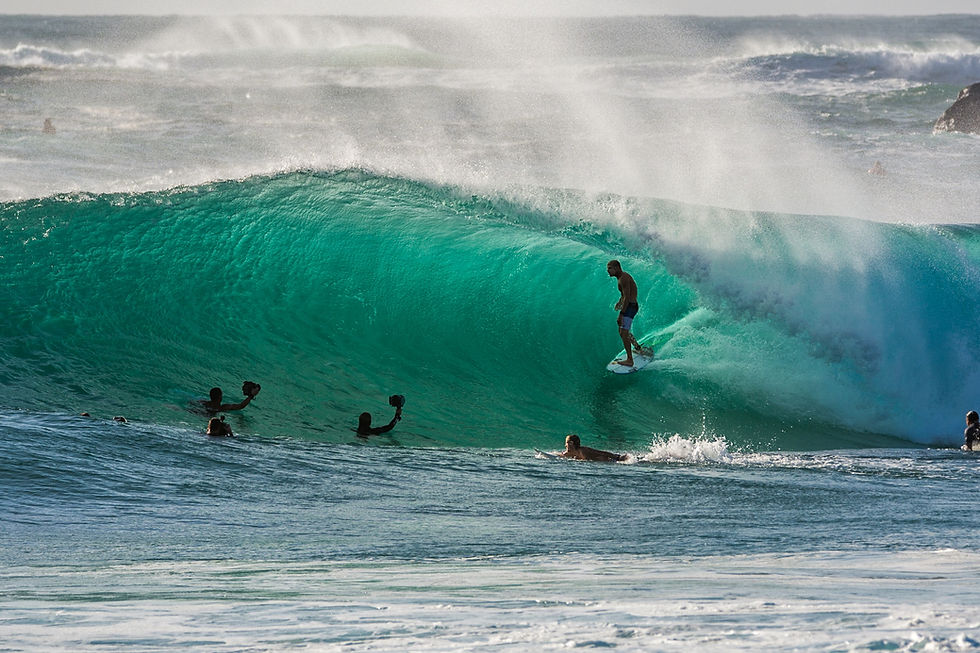The Science of Rails: Soft vs. Hard Edges Explained
- mcoe0911
- Nov 2
- 2 min read
When it comes to surfboard design, rail shape is one of the most influential — yet often overlooked — features that determines how your board feels underfoot. The edges that run along your board’s outline directly affect water flow, control, and forgiveness. Understanding the science behind soft vs. hard rails can help you choose a board that suits your surf style, wave conditions, and skill level.
What Are Rails, and Why Do They Matter?
Rails are the curved edges that transition from the deck to the bottom of your surfboard. They influence how water wraps around your board as you move, dictating your speed, stability, and responsiveness. Think of them as your board’s steering and traction system — they determine how “sticky” or “slippery” your ride feels on the face of a wave. Broadly, there are two main types of rail profiles: soft rails and hard rails, though most modern boards blend the two for optimal performance.
Soft Rails: Forgiving Flow and Smooth Turns
Soft rails feature a rounded edge that transitions gradually from deck to bottom. They’re most common on longboards, funboards, and beginner surfboards.
How They Work:The rounded shape allows water to wrap smoothly around the rail, creating more hold and forgiveness. This design reduces the likelihood of catching an edge, making it easier to glide and maintain balance.
Best For:
Small to medium surf
Beginners or intermediate surfers
Cruisy, flowing turns
Performance Feel: Soft rails deliver a smooth, stable ride — ideal for trimming, nose riding, and maintaining flow down the line. They’re less reactive but much more forgiving, especially in bumpy or mushy conditions.
Hard Rails: Speed, Precision, and Bite
Hard rails have a defined edge, particularly near the tail, where the bottom meets the side of the board at a sharper angle. This edge allows water to release cleanly, generating speed and control.
How They Work: By redirecting water flow off the rail instead of wrapping around it, hard rails reduce drag and allow for faster, more responsive turns. The sharper edge gives you the ability to dig into the wave face and hold your line during powerful maneuvers.
Best For:
Fast, hollow, or steep waves
Intermediate to advanced surfers
Performance shortboards and fish designs
Performance Feel: Expect a snappier, more reactive ride with hard rails — perfect for carving, vertical surfing, and quick direction changes. However, they demand precision: small mistakes can result in catching edges or losing control.
Blended Rails: The Best of Both Worlds
Most boards today use a combination rail design — softer up front for forgiveness and harder near the tail for performance. This hybrid profile provides easy entry into waves while maintaining speed and drive during turns.
Choosing the Right Rails for You
If you’re learning or love a mellow, flowing style, go with softer rails for stability and comfort. If you crave responsiveness and tighter carves, harder rails will match your energy. And if you want versatility across conditions, consider a blended setup — it’s the secret behind many all-rounder boards.
Rails may seem subtle, but they’re the hidden science behind your board’s personality. Next time you’re eyeing your next stick on Thyrasurf.com, take a closer look at those edges — because a well-chosen rail can completely redefine your ride. SEARCH ALL BOARDS >


Comments